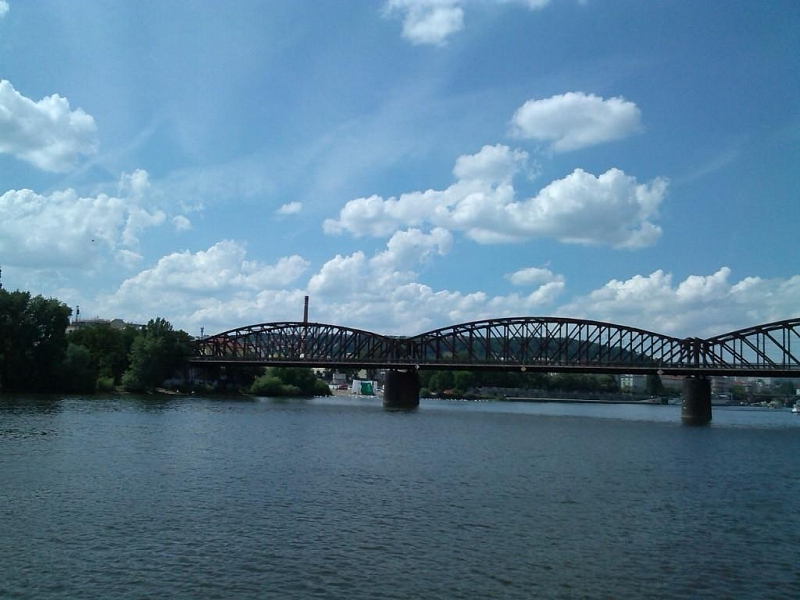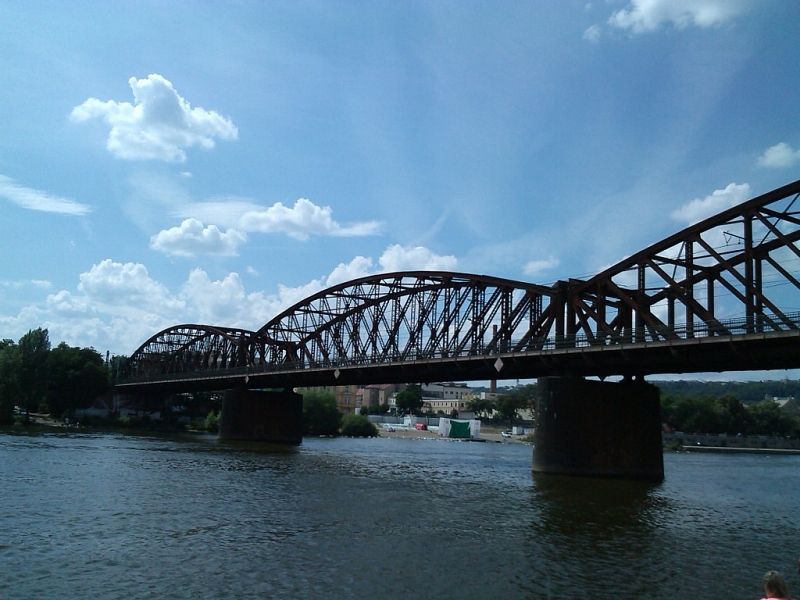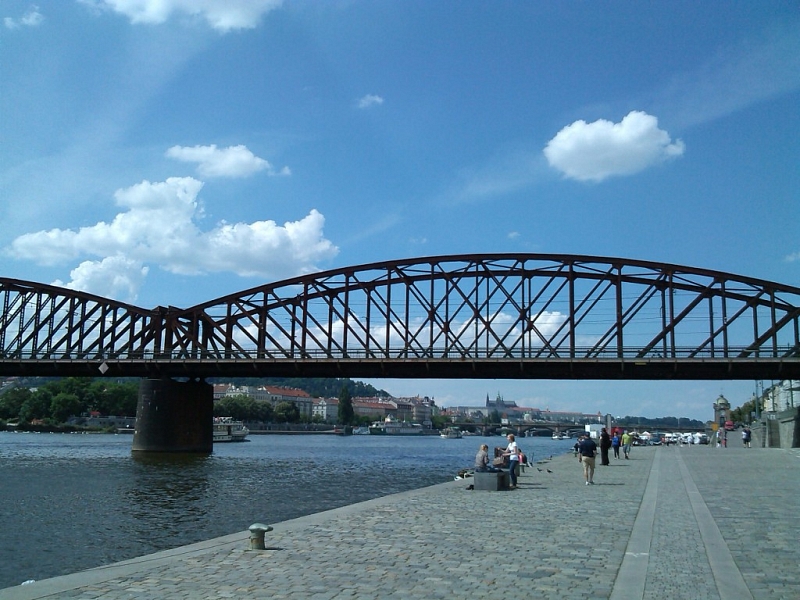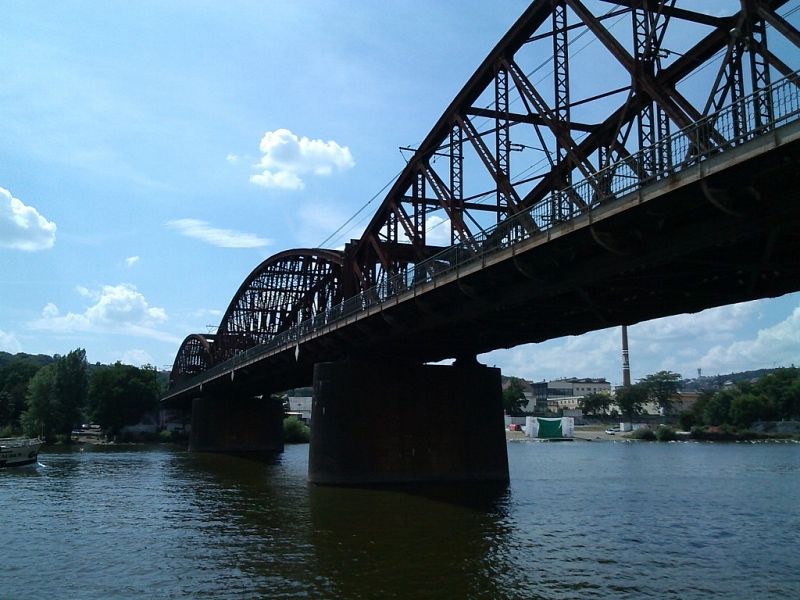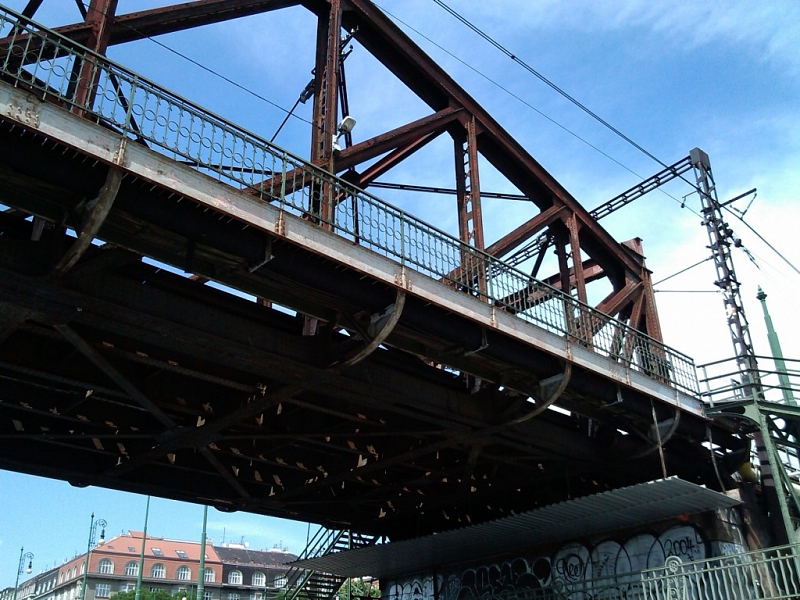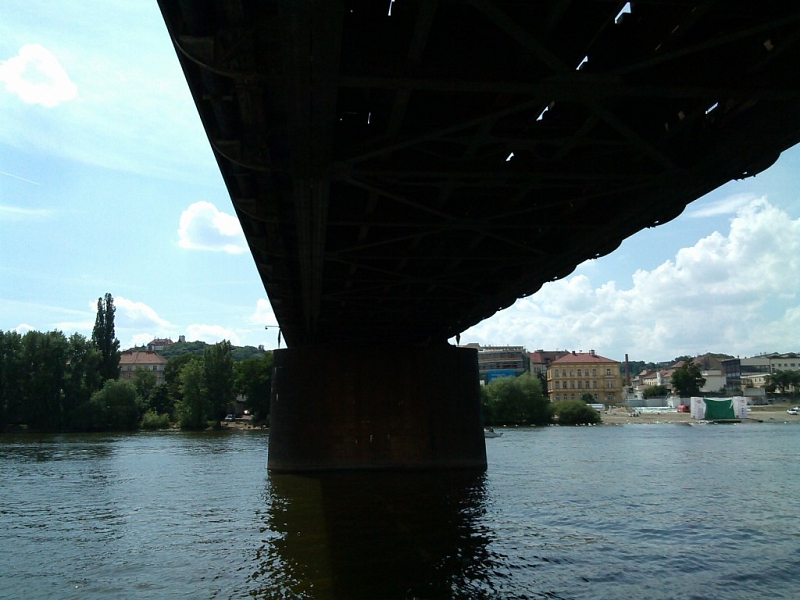Vyšehrad Railway Bridge Prague
The railway bridge, which in exceptional cases is mentioned as Vyšehradský, is a connection between the banks of the Vltava near Prague's Výtoň pod Vyšehradem and Smíchov. The bridge has no official name and is marked on the maps as a railway bridge with a small "ž", so this designation was used as a name.
Information for visitors
Interesting facts Vyšehrad Railway Bridge Prague
The railway bridge is about as inseparable as the Charles Bridge to the panorama of Prague Castle. In Prague, it is the fourth bridge over the Vltava River downstream.
Original and new bridge
Originally, there was another bridge in these places, built between 1871 and 1872, which was part of the connecting railway that passed through the Nuselský valley, and which connected the František Josef railway station (now the main railway station) with the Western Railway Station (today Smíchovský). The construction of the original bridge was single-track with three pillars. It was a steel lattice and straight belt bridge with five bays, each reaching a length of 56.9 m. The total length of the bridge was 196.3 m.
By the end of the 19th century, the original bridge ceased to meet the transport requirements of the time, so it was decided that it would be replaced by a new bridge with a double-track line.
The new bridge was built between 1900 and 1901 and the construction took place by building new pillars in the riverbed, assembling truss girders next to the original bridge, while the replacement was carried out during the closure, which then lasted several days.
The current bridge consists of three lattice girders with a span of 69.6 m and a width of 8.1 m. The bridge is also used for pedestrians, who are designated sidewalks on both sides of the bridge. After the obligation of right-hand road traffic was imposed on March 26, 1939, it was obligatory to always use the left sidewalk on this bridge.
Author: Andrea Štyndlová
